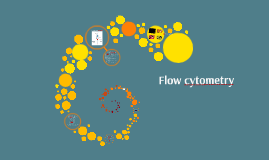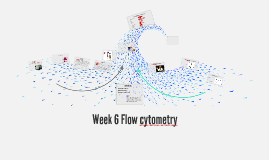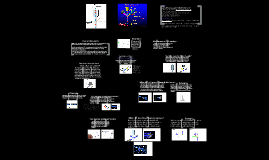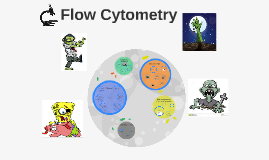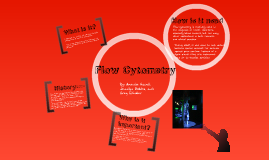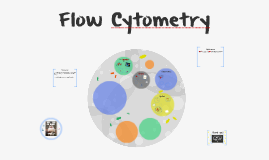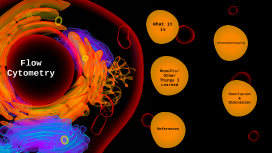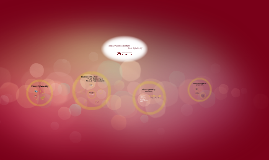Flow Cytometry
Transcript: GOALS & AIMS: To engineer the most effective tumor targeting molecule for each clinical biomarker. Proteins are engineered to deliver diagnostic and therapeutic payloads to precise locations in the body such as metastatic tumors. Flow cytometry and directed evolution are used to identify the most effective proteins based on their ability to selectively target disease biomarkers. Acquisition Analysis Consultation Instrument Troubleshooting Repair Overview of Flow Cytometry Services Masonic Cancer Research Building (MCRB) 425 E River Pkwy, East Bank Campus Benjamin Hackel, Ph.D. Data Visualization need info from Ben INSERT VIDEO INTERVIEW OF INVESTIGATOR DISCUSSION RESEARCH AND INTERACTION WITH RESOURCE Paul Champoux... [insert catchy value-added phrase] Abstracts Subsidized rates on all services offered by Flow Cytometry Research Focus: Cancer & Cardiovascular Research Building (CCRB) 2231 6th St. SE, East Bank Campus Engineering Molecules for Tumor Targeting Grants --- Credits --- Music: "Raro Bueno" by Chuzausen (http://freemusicarchive.org/music/Chuzausen/Awesome_Is_Grey/06_chuzausen_-_raro_bueno) Images: Various images taken from currently available UMN content Kruziki, M.A., Bhatnagar, S., Woldring, D.R., Duong, V.T., and Hackel, B.J., "A 45-amino acid scaffold mined from the Protein Data Bank for high affinity ligand engineering" Chem. Biol. in press. Woldring, D.R., Holec, P.V., Zhou, H., and Hackel, B.J., “High-throughput evolution reveals an optimal gradient of diversity in sitewise combinatorial library design of a hydrophilic fibronectin domain” submitted. Case, B.A., and Hackel, B.J. "Synthetic and natural consensus design for engineering charge within an affibody targeting epidermal growth factor receptor" submitted. Benjamin Hackel, Ph.D. Benjamin Hackel, Ph.D. NIH R21 Molecular Imaging of MET with Small Protein Ligands (PI: Hackel) MN Futures Award (PIs: Hackel, Panyam, Sachdev) DoD Grant: Prostate Cancer imaging (PI: Hackel) Additional knowledge and expertise provided by Flow Cytometry staff 2nd Location Flow Cytometry Services Publications *services used on this project Posters Research Recognition & Outcomes Benjamin Hackel, Ph.D. Flow Cytometry Resource Location Masonic Cancer Center Researcher Benefits 26. Kruziki, M.A., Holec, P.V., Woldring, D.R., Zhou, H., and Hackel, B.J.* “Rational identification of scaffolds for combinatorial discovery of ligands”, American Chemical Society, Denver, CO, March 2015. 24. Kruziki, M.A., Bhatnagar, S., Zhou, H., Easton, A., and *Hackel, B.J., “Evolving a 45-Amino Acid Ligand Scaffold for Enhanced Stability and Tumor Targeting”, American Institute of Chemical Engineers Annual Meeting, Atlanta, GA November 2014. 23. Woldring, D.R., Holec, P.V., Zhou, H., and *Hackel, B.J., “Optimizing Combinatorial Diversity with High Throughput Selections and Computation”, American Institute of Chemical Engineers Annual Meeting, Atlanta, GA November 2014. 22. Holec, P.V. and *Hackel, B.J., “ProtID: Systematic Identification of Protein Scaffolds for Molecular Recognition”, American Institute of Chemical Engineers Annual Meeting, Atlanta, GA November 2014. 20. *Woldring, D.R., and Hackel, B.J., “Gradient Diversity Enriches Combinatorial Protein Library Design”, Annual Symposium of the Protein Society, San Diego, CA, July 2014. 19. Hackel, B.J., “Engineering protein ligands for molecular imaging”, Gordon Research Conference: Peptides, Chemistry and Biology, Ventura, CA February 2014. 17. Woldring, D.R. and *Hackel, B.J., “Gradient diversity enriches combinatorial library design”, American Institute of Chemical Engineers Annual Meeting, San Francisco, CA November 2013. 16. Kruziki, M.A., Bhatnagar, S., and *Hackel, B.J., “Engineering picomolar affinity into a 5 kDa scaffold for tumor targeting”, American Institute of Chemical Engineers Annual Meeting, San Francisco, CA November 2013. 15. Case, B. and Hackel, B.J.*, “Engineering ligand biophysics to enhance tumor targeting”, American Institute of Chemical Engineers Annual Meeting, San Francisco, CA November 2013. INSERT VIDEO INTERVIEW OF INVESTIGATOR DISCUSSING THE VALUE OF THE CORE TO THIS PROJECT Insert video of shared resource leader/coordinator discussing involvement in project, interesting takeaways, etc. Flow Cytometry Flow Cytometry Leadership Insert visual(s) illustrating research results utilizing core support/resources/expertise Resource located in 1-209 CCRB space near research member laboratories 16. Protein Engineering General Summit, Boston, MA, May 4, 2015. 15. Department of Pharmacology, University of Minnesota, May 1, 2015. 14. Giuseppe Garibaldi Memorial Hematology Oncology Research Conference, Minneapolis, MN, March 6, 2015. 13. R&D Systems, Minneapolis, MN, March 2, 2015. 12. Chemical Biology Seminar, University of Minnesota, February 9, 2015. 11. International Conference on Biomolecular Engineering, Austin, TX, January 18, 2015. 10. Department of Physics and Astronomy, University of Minnesota, October






